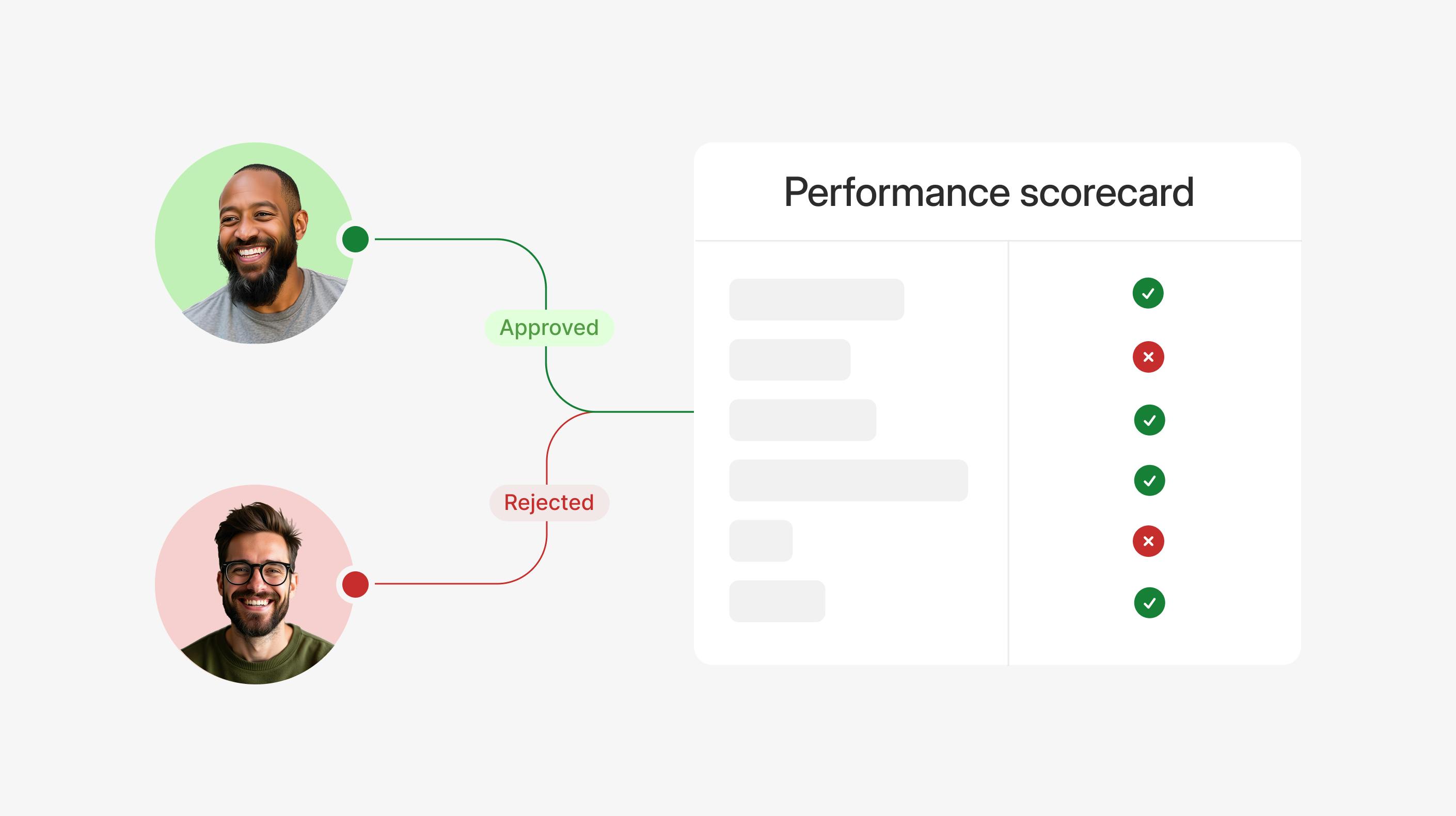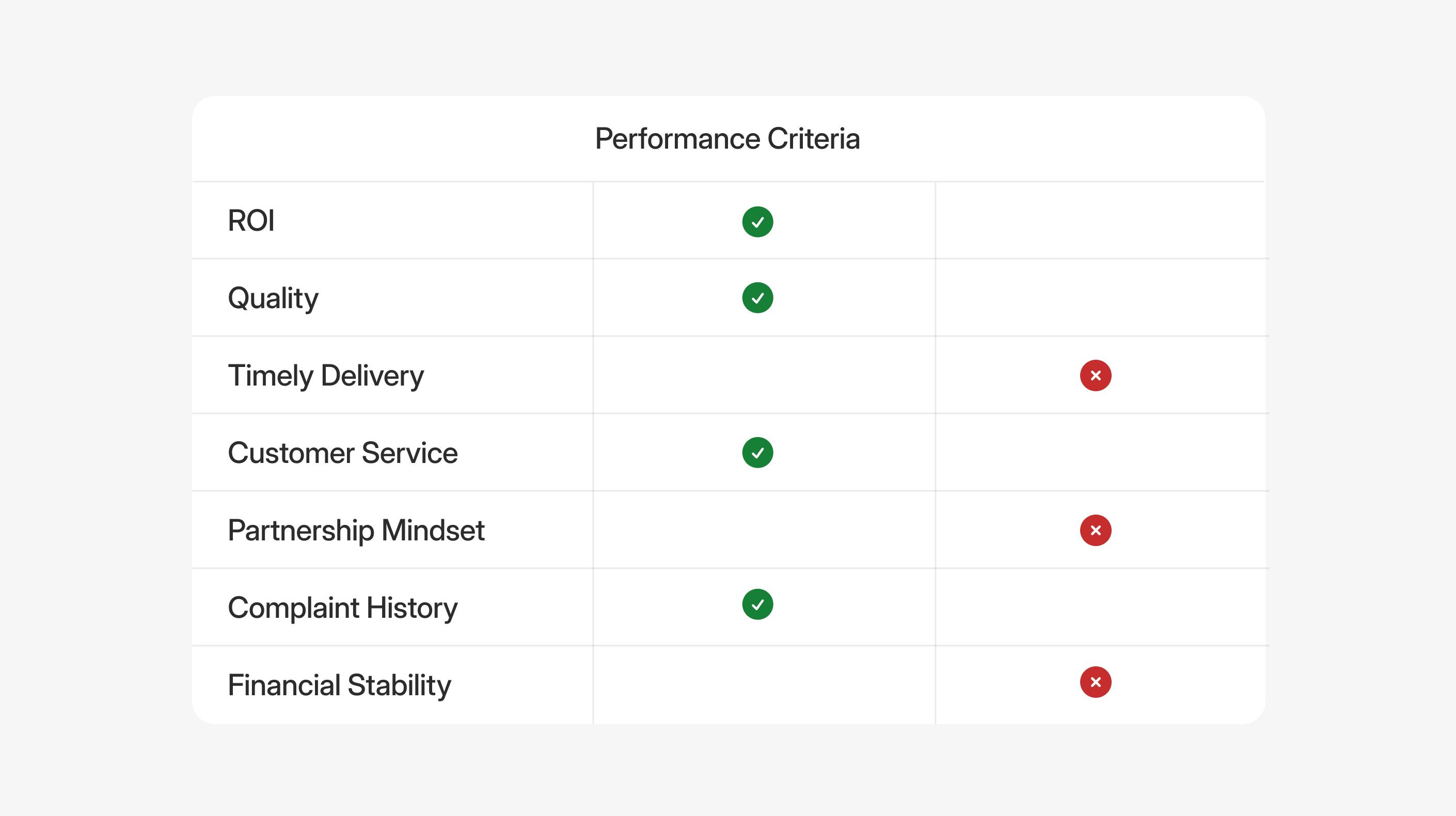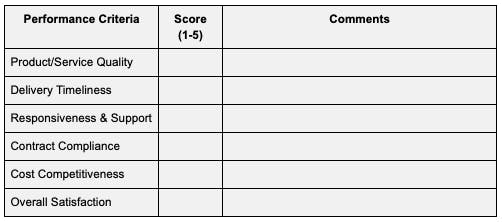For procurement teams, effective vendor performance measurement, optimization, and evaluation are the cornerstones of successful procurement and strategic sourcing. Evaluation helps organizations ensure they’re getting maximum value from their vendors, maintain quality standards, and mitigate risk.
As procurement professionals face tighter budgets and increased scrutiny, a structured evaluation process is no longer just beneficial; it's essential. Let’s explore vendor performance and effective evaluation methods, including tips for building a robust vendor review process and examples of vendor evaluation forms.
What is vendor performance?
Vendor performance refers to how well your vendors meet their contractual obligations in terms of quality, timeliness, compliance, and overall value delivered. Regularly assessing vendor performance provides valuable insights into areas for improvement, facilitates more effective negotiations, and fosters stronger vendor relationships over time.
“Without a solid foundation in cost control, performance standards, and risk management, you can’t really build effective supplier relationships,” said Doug Roginson, Head of Supplier Relationship Management at JPMorganChase, in a recent article on mastering vendor management for business success.
“Think of vendor management as your foundation, with supplier relationship management as the valuable structure you build upon it.”
Why evaluate vendor performance?

Evaluating vendor performance systematically allows you to:
- Identify and address issues proactively
- Improve supplier accountability and compliance
- Optimize costs by rewarding top-performing vendors
- Enhance decision-making during vendor renewals or replacements
- Protect your organization’s reputation by avoiding poor-quality or non-compliant suppliers
A 2025 survey by Responsive found that 76% of procurement managers identify vendor management as one of their top challenges, underscoring the need for rigorous performance evaluations.
Tips for an effective vendor review process:
Before initiating your vendor search, clearly outline your organization's specific business requirements and desired service levels. Engage stakeholders from the start to ensure all essential needs are documented, and establish agreement on criteria for evaluating potential vendors.
Additionally, use a standardized solicitation format for vendor responses to facilitate straightforward, objective comparisons. It's beneficial to create a consistent scoring system or evaluation matrix aligned to your business needs. This approach transforms initial impressions into actionable data, helping you validate intuitive preferences with concrete evidence.
"You may have a gut feeling about which vendor to work with, but it’s important to substantiate that gut feeling through a formal process," Roginson said.
- Set clear, measurable KPIs: Clearly defined key performance indicators (KPIs) such as delivery times, product quality scores, compliance metrics, and service responsiveness should anchor your evaluations.
- Regular reviews: Schedule reviews consistently, such as quarterly or bi-annually, to promptly address potential issues.
- Gather cross-functional feedback: Engage multiple departments (e.g., procurement, quality assurance, finance) for a comprehensive perspective.
- Use technology to streamline reviews: Tools like Responsive's Request Projects help procurement teams centralize feedback, automate reminders, and maintain documentation for audits and reviews.
- Communicate results transparently: Share feedback openly with vendors, recognizing strong performance and clearly outlining areas for improvement.
3 big benefits of regular vendor performance evaluations
Set clear benchmarks and goals
Vendor performance management is key to strategic sourcing. Define benchmarks and goals early, ideally within your initial request for proposal (RFP). Regular vendor reviews track and reinforce these goals throughout the sourcing process, ensuring your investment delivers the expected value.
Strengthen and innovate partnerships
Vendor performance reviews function similarly to internal reviews by highlighting strengths and areas for improvement. Regular evaluations promote accountability and prevent complacency, fostering stronger, more collaborative vendor partnerships.
As Gartner analyst Joanne Spencer notes: “When managed badly, large strategic vendors can become complacent, slow moving and intractable.” Regular reviews ensure alignment, transparency, and shared innovation.
Enable cost avoidance and savings
Evaluating vendor performance is crucial for financial management, aiding both cost avoidance and reduction. Regular reviews help identify when vendor relationships have reached their end or when new opportunities with proven partners arise.
Additionally, leveraging vendor capabilities across departments can streamline procurement, reduce onboarding costs, and secure volume discounts.
How to create a vendor review program

Identify key KPIs
The first step in vendor evaluations is defining key performance indicators (KPIs) tailored to your organization's unique needs. Your KPIs depend heavily on your specific business context, such as on-time delivery records or certifications for shipping providers.
Common KPIs include:
- ROI
- Quality
- Timely Delivery
- Customer Service
- Commitment to Feedback
- Partnership Mindset
- Complaint History
- Financial Stability
You should consider sustainability, supplier diversity, and risk management during regular evaluations.
Essential vendor review questions
Does the vendor deliver as promised?
Evaluate if the vendor consistently meets your expectations regarding quality, compliance, certifications, and regulations. Forbes advises measuring aspects like defect rates or customer satisfaction tied to contractual agreements.
Are deadlines consistently met?
Timeliness is crucial. Consider if the vendor delivers the correct products or services in the right quantities and locations, meeting your deadlines and expectations.
Is customer service responsive?
Quality service means receiving timely, helpful, and informed support. Assess responsiveness, ease of ordering, efficiency in handling change requests, and overall dedication from your account team.
Is there future potential?
Vendors should welcome feedback and actively seek improvement. Determine if your vendor demonstrates adaptability and shares your business vision, supporting scalability as your organization evolves.
Example of a basic vendor evaluation form:
To help you get started, we created a basic, simplified example of a vendor evaluation form you can adapt and expand upon to fit your needs:

Sample vendor review templates
Creating a vendor review template from scratch may seem intimidating. If you’re looking for something more in-depth than the basic option we provided above, we've gathered a few real-life examples to help speed up the process of creating your own template.
Remember, in addition to improving the RFP process, you can use an RFP management platform for any information gathering need. For instance, you can create vendor profiles to proactively gather supplier updates. Or, you can streamline the vendor performance evaluation process with vendor self-reviews and collaborative internal reviews that engage stakeholders.
Prairie View A&M University - Vendor performance evaluation template
With more categories to consider, this performance evaluation template from Prairie View A&M University is slightly more in depth. In addition, it provides a helpful guide to scoring each vendor. Additionally, the form provides a place for vendor comments. This enables the process to be more collaborative while creating a complete picture for your records.
Ceres - Supplier self-assessment example (Sustainability)
It can be helpful to have vendors assess themselves to evaluate their understanding of your organization's needs. In this example from Ceres, vendors must evaluate their sustainability performance.
Enhancing your vendor evaluation strategy
To further optimize your approach, consider integrating your evaluation processes with tools like Responsive's Platform, which facilitates easy collaboration, provides access to analytics, and leverages AI to inform vendor assessments.
With the right structure and tools, your procurement team can ensure high-quality vendor performance and contribute significantly to your organization's bottom line.
